
The 36th Infantry Division ("Arrowhead") also known as the "Panther Division", the "Lone Star Division", "The Texas Army", and the "T-patchers", is an infantry division of the U.S. Army and part of the Texas Army National Guard. The 36th Infantry Division was organized during World War I (1914–1918) from units of the Texas National Guard and of the Oklahoma National Guard. As an all-Texas unit, the Arrowhead Division was called to service for World War II (1937–1945) on 25 November 1940, was deployed to the European Theater of Operations in April 1943, and returned to the Texas Army National Guard in December 1945.
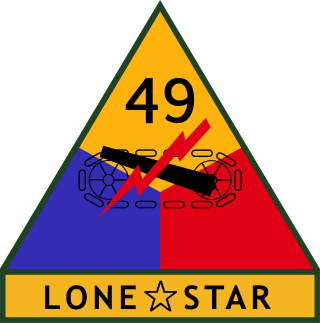
The 49th Armored Division —nicknamed the "Lone Star"— was an armored division of the Texas Army National Guard during the Cold War.

A service star is a miniature bronze or silver five-pointed star 3⁄16 inch (4.8 mm) in diameter that is authorized to be worn by members of the eight uniformed services of the United States on medals and ribbons to denote an additional award or service period. The service star may also be referred to as a campaign star or battle star depending on which award the star is authorized for and the manner in which the device is used for the award.
The Armed Forces Expeditionary Medal (AFEM) is a military award of the United States Armed Forces, which was first created in 1961 by Executive Order of President John Kennedy. The medal is awarded to members of the U.S. Armed Forces who, after July 1, 1958, participated in U.S. military operations, U.S. operations in direct support of the United Nations, or U.S. operations of assistance for friendly foreign nations.

The Iraq Campaign Medal (ICM) is a military award of the United States Armed Forces which was created by Executive Order 13363 of U.S. President George W. Bush on 29 November 2004, and became available for general distribution in June 2005. The medal was designed by the U.S. Army Institute of Heraldry and was awarded during the Iraq War, from 19 March 2003 to 31 December 2011.

The Global War on Terrorism Service Medal (GWOT-SM) is a military award of the United States Armed Forces which was created through Executive Order 13289 on 12 March 2003, by President George W. Bush. The medal recognizes those military service members who have supported operations to counter terrorism in the War on Terror from 11 September 2001, to a date yet to be determined.
The Global War on Terrorism Expeditionary Medal (GWOT-EM) is a United States Armed Forces award created by George W. Bush on 12 March 2003, through Executive Order 13289. The medal recognizes those military service members who have deployed overseas in direct service to the War on Terror from 11 September 2001 to a date to be determined. Prior to 30 April 2005, the medal was awarded for service within Iraq and Afghanistan, but has been replaced with the Iraq Campaign Medal and Afghanistan Campaign Medal and serves primarily as recognition for personnel who have deployed in support of the War on Terror to locations beyond Iraq and Afghanistan. In a similar fashion the Inherent Resolve Campaign Medal is issued for service in the fight against ISIS, with eligibility retroactive to 15 June 2014.
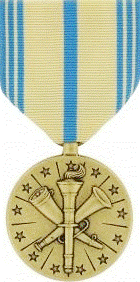
The Armed Forces Reserve Medal (AFRM) is a service medal of the United States Armed Forces that has existed since 1950. The medal recognizes service performed by members of the reserve components and is awarded to both officers and enlisted personnel. The medal is considered a successor award to the Naval Reserve Medal and the Marine Corps Reserve Ribbon, which were discontinued in 1958 and 1967, respectively.

The 9th Cavalry Regiment is a parent cavalry regiment of the United States Army. It is not related to the 9th Kansas Cavalry Regiment of the Union Army. Historically, it was one of the Army's four segregated African-American regiments and was part of what was known as the Buffalo Soldiers. The regiment saw combat during the Indian and Spanish–American Wars. During Westward Expansion, the regiment provided escort for the early western settlers and maintained peace on the American frontier.

The 1st Battalion, 227th Aviation Regiment is an attack helicopter battalion of the Combat Aviation Brigade, 1st Cavalry Division. The battalion is an AH-64 Apache battalion based at Fort Hood, Texas.
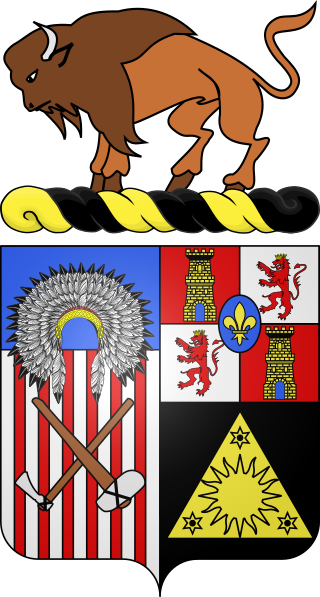
The 10th Cavalry Regiment is a unit of the United States Army. Formed as a segregated African-American unit, the 10th Cavalry was one of the original "Buffalo Soldier" regiments in the post–Civil War Regular Army. It served in combat during the Indian Wars in the western United States, the Spanish–American War in Cuba, Philippine–American War and Mexican Revolution. The regiment was trained as a combat unit but later relegated to non-combat duty and served in that capacity in World War II until its deactivation in 1944.

The 3rd Brigade Combat Team, 1st Cavalry Division is a combined arms armored brigade of the 1st Cavalry Division based in Fort Cavazos, TX. Major equipment includes the M1A2SEP Tanks, M2A3 & M3A3 Bradley infantry fighting vehicles, M109A6 Paladin howitzers, and M1114 up-armored Humvees.

The 53rd Infantry Brigade Combat Team is an infantry brigade combat team of the Florida Army National Guard. The 53rd Infantry Brigade is the largest National Guard unit in the state of Florida. The brigade was one of fifteen enhanced readiness brigades, designed and trained to support active duty divisions. The brigade includes 32 units in Florida and Alabama with 4,166 authorized personnel.

The 50th Infantry Brigade Combat Team was an infantry brigade combat team of the United States Army National Guard of New Jersey. It was headquartered at the Lawrenceville Armory.

The 112th Cavalry Regiment is a Texas National Guard regiment that served in several Pacific campaigns during World War II.
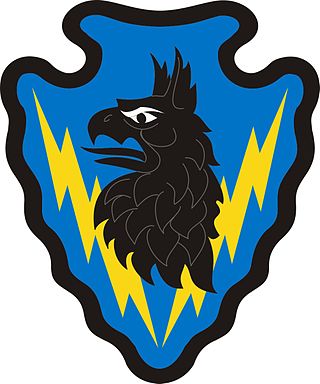
The 71st Expeditionary Military Intelligence Brigade (EMIB) is a unit of the Texas Army National Guard.
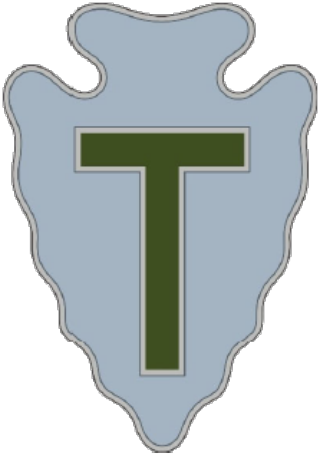
The 56th Infantry Brigade Combat Team is a brigade combat team unit of the Texas Army National Guard, part of the 36th Infantry Division.
The Texas Combat Service Ribbon is a campaign/service award of the Texas Military Department that may be issued to a service member of the Texas Military Forces. Subsequent awards are issued by a bronze or silver star device.

The 124th Cavalry Regiment is a United States Army cavalry regiment, represented in the Texas Army National Guard by 1st Squadron, 124th Cavalry, part of the 56th Infantry Brigade Combat Team at Waco.

The 44th Infantry Brigade Combat Team is an infantry brigade combat team of the New Jersey National Guard. It is headquartered at the Lawrenceville Armory in Lawrenceville, New Jersey, United States. The 44th Brigade Combat Team is the major unit of the New Jersey Army National Guard. The 44th Brigade Combat Team has three light infantry battalions, one field artillery battalion, one cavalry squadron, an engineer battalion, and a support battalion.
















